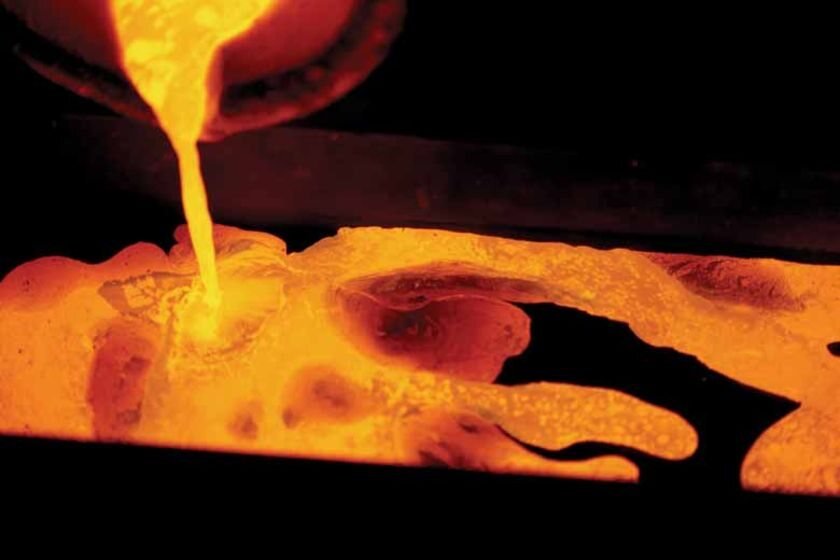Neon is the chemical element with atomic number 10, symbol Ne
Its name is taken from the Greek νέος (neos), “new” in English. In the periodic table of elements, neon is in the 8th main group, or the 18th group of IUPAC, and therefore belongs to the noble gases. Like other rare gases, it is a colorless, extremely inert and monoatomic gas. For many properties such as melting and boiling point or density, it falls between helium, which is lighter, and argon, which is heavier.
Neon is one of the most abundant elements in the universe, but it is relatively rare on earth because, like helium, much of the gas has escaped into space. It is mainly found in the Earth’s atmosphere; only small amounts are trapped in the rocks.
Like krypton and xenon, neon was discovered in 1898 by William Ramsay and Morris William Travers by fractional distillation of liquid air. The most well-known applications are fluorescent tubes or neon lamps, in which neon is excited by electric shocks to glow a typical red-orange color.
It is the second lightest noble gas, reddish-orange in color in a vacuum discharge tube and in neon lamps and has 40 times the refrigeration capacity of liquid helium and three times that of liquid hydrogen (on a unit volume basis). In most applications it is a cheaper refrigerant than helium. Neon has the most intense discharge at normal voltages and currents than any noble gas.
Although neon is the fourth most abundant element in the universe, only 0.0018% of the Earth’s atmosphere is neon.
The reddish-orange color that neon emits in neon lights is widely used to advertise signs. Neon is also used generically for these types of lights when in fact many other gases are used to produce different colors of light. Other uses of neon include indicators, lightning interceptors, high voltage tubes, and television tubes. Neon and helium are used to make a type of gas laser. Liquefied neon is commercially used as an economical cryogenic refrigerant.
Neon is usually found as a gas with molecules consisting of a single neon atom. Neon is a rare gas which is found in the earth’s atmosphere at 1 part in 65,000 and is produced by frozen air and fractionated distilled to form cryogenic liquid.
Health effects of neon
Inhalation risk: this liquid evaporates very quickly causing air supersaturation with serious risk of suffocation when in confined areas.
Effects of Exposure: Inhalation: Simple asphyxiant. Skin: If in contact with liquid: frostbite. Eyes: If in contact with liquid: frostbite.
Inhalation: This gas is inert and is classified as a simple asphyxiant. Inhaled in excessive concentrations, the following consequences are observed: dizziness, nausea, vomiting, loss of consciousness, and death. Death can result from errors in judgment, confusion, or the loss of consciousness of individuals who want to save. At low oxygen concentrations unconsciousness and death can occur within seconds without warning.
The effect of simple asphyxiant gases is proportional to the degree to which they decrease the amount (partial pressure) of oxygen in the air that is breathed. Oxygen can be reduced to 75% of its normal percentage in air before appreciable symptoms develop. This in turn requires the presence of a simple asphyxiant in a 33% concentration in the air and gas mixture. When the simple asphyxiant reaches a concentration of 50%, marked symptoms can be produced. A 75% concentration is lethal within minutes.
Symptoms: The first symptoms produced by a simple asphyxiant are rapid breathing and lack of air. Mental alertness is reduced and muscle coordination is impaired. Later judgment becomes faulty and all sensations are diminished. Emotional instability often results and fatigue occurs quickly. As the asphyxia progresses, there may be nausea and vomiting, prostration and loss of consciousness, and eventually convulsions, deep coma and death.
Neon in the periodic table
| Atomic number (Z) | 10 |
|---|---|
| Group | group 18 (noble gases) |
| Period | period 2 |
| Block | p-block |
| Electron configuration | [He] 2s2 2p6 |
| Electrons per shell | 2 |
Physical properties
| Physical properties | |
|---|---|
| Phase at STP | gas |
| Melting point | 24.56 K (−248.59 °C, −415.46 °F) |
| Boiling point | 27.104 K (−246.046 °C, −410.883 °F) |
| Density (at STP) | 0.9002 g/L |
| when liquid (at b.p.) | 1.207 g/cm3 |
| Triple point | 24.556 K, 43.37 kPa |
| Critical point | 44.4918 K, 2.7686 MPa |
| Heat of fusion | 0.335 kJ/mol |
| Heat of vaporization | 1.71 kJ/mol |
| Molar heat capacity | 20.79 J/(mol·K) |
Vapor pressure
| P (Pa) | 1 | 10 | 100 | 1 k | 10 k | 100 k |
|---|---|---|---|---|---|---|
| at T (K) | 12 | 13 | 15 | 18 | 21 | 27 |
Atomic properties
| Atomic properties | |
|---|---|
| Oxidation states | 0 |
| Ionization energies |
|
| Covalent radius | 58 pm |
| Van der Waals radius | 154 pm |
Other properties
| Other properties | |
|---|---|
| Natural occurrence | primordial |
| Crystal structure | face-centered cubic (fcc) |
| Speed of sound | 435 m/s (gas, at 0 °C) |
| Thermal conductivity | 49.1×10−3 W/(m·K) |
| Magnetic ordering | diamagnetic |
| Magnetic susceptibility | −6.74·10−6 cm3/mol (298 K) |
| Bulk modulus | 654 GPa |
| CAS Number | 7440-01-9 |
History
| History | |
|---|---|
| Prediction | William Ramsay (1897) |
| Discovery and first isolation | William Ramsay & Morris Travers (1898) |
Main isotopes of neon
| Main isotopes of neon | |||||||||||||||||||||
|---|---|---|---|---|---|---|---|---|---|---|---|---|---|---|---|---|---|---|---|---|---|
| |||||||||||||||||||||
Periodic Table of Elements | Complete List of Chemical Elements by Group, Name, Symbol, Color and Type

Sources: PinterPandai, Chemicool, Live Science, Royal Society of Chemistry
Photo credit: Pslawinski / Wikimedia Commons


